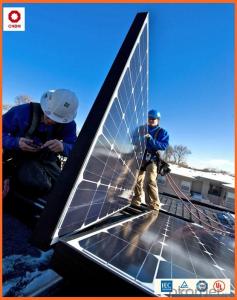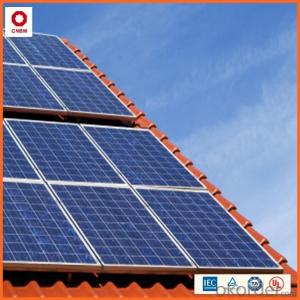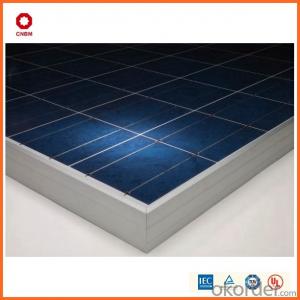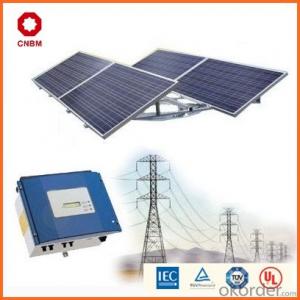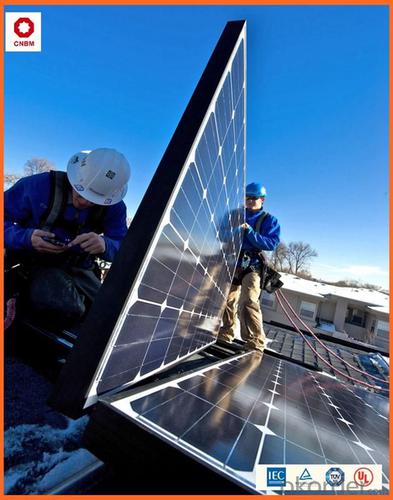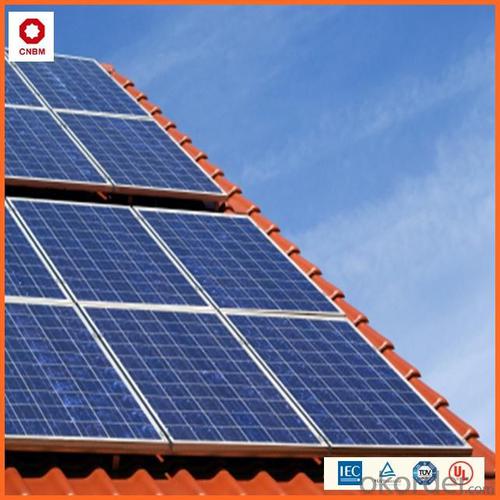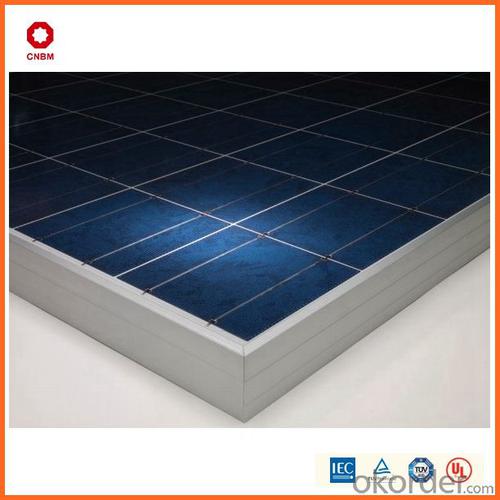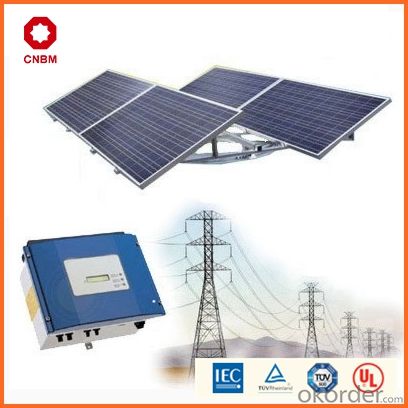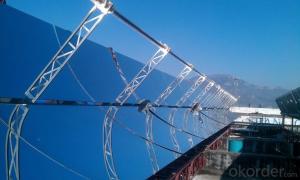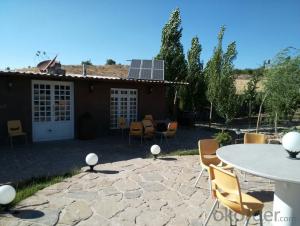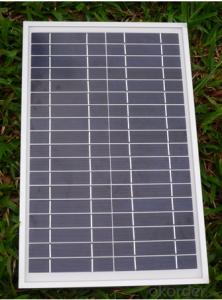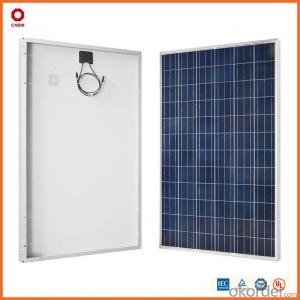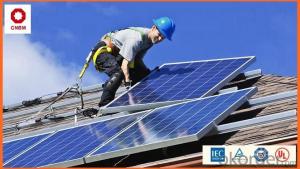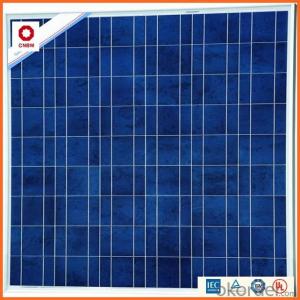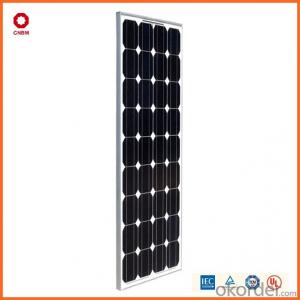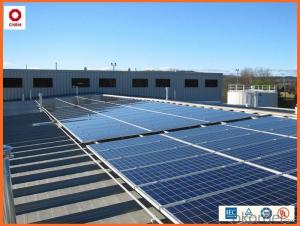Maryland Solar Energy Systems 45w Small Solar Panels in Stock China Manufacturer
- Loading Port:
- China main port
- Payment Terms:
- TT OR LC
- Min Order Qty:
- 1 watt
- Supply Capability:
- 10000000 watt/month
OKorder Service Pledge
OKorder Financial Service
You Might Also Like
Specification
Product Description:
Hot Sale !!! Quality and Safety of Small Poly Solar Panel 5w~150w
1. Rigorous quality control meets the highest international standards.
2. High-transmissivity low-iron tempered glass, strong aluminium frame.
3. Using UV-resistant silicon.
4. IS09001/14001/CE/TUV/UL
Warranties of Small Poly Solar Panel 35~85w
1. 10 years limited product warranty
2. 15 years at 90% of the minimal rated power output
3. 25 years at 80% of the minimal rated power output
Specification
Characteristics of Poly solar panels CNBM (245-320W) | |||||
Max Power Voltage Vmp(V) | 30.3 | 30.8 | 31.1 | 31.4 | 31.85 |
Max Power Current Imp(A) | 7.60 | 7.64 | 7.73 | 7.81 | 7.85 |
Open Circuit Voltage Voc(V) | 36.1 | 36.6 | 37 | 37.3 | 37.68 |
Short Circuit Current Isc(A) | 8.50 | 8.55 | 8.65 | 8.75 | 8.85 |
Max Power Pm(W) | 230W | 235W | 240W | 245W | 250W |
Temperature Coefficient of Cells Poly solar panels CNBM (245-320W) | |
NOCT | 45± 2 |
Temperature Coeffucients of Isc | 0.0492 |
Temperature Coeffucients of Voc | -0.3374 |
Temperature Coeffucients of Voc | -0.4677 |
Mechanical Data of Poly solar panels CNBM (245-320W) | |
Dimension | 1638 × 982 × 40 mm |
Weight | 19.5 kg |
No. of Cells and Connections | 60 (6 ×10) |
Tolerance | 0 ~ + 5 W |
Cell | Monocrystalline Cell 156 × 156 mm |
Packing | 624 Pcs/40ft(H) Container |
Limits of Poly solar panels CNBM (245-320W) | |
Operating Temperature | -40 to +85 |
Storage Temperature | -40 to +85 |
Max System Voltage | 1000VDC(IEC) / 600VDC(UL) |
Features of our products:
• High conversion efficiency mono/poly-crystalline amorphous silicon solar cells
• Modules incorporate high performance bypass diodes to minimize the power drop caused by shading
• High transmittance, low-iron tempered glass
• High performance EVA encapsulant to prevent destroying and water.
• AI frame: without screw, corner connection. 8 holes on the frame can be installed easily
• Good performance of preventing from atrocious weather such as wind and hails
• Certifications: CE IEC TUV VDE UL, Class I
• 10 years 90% power output warranty
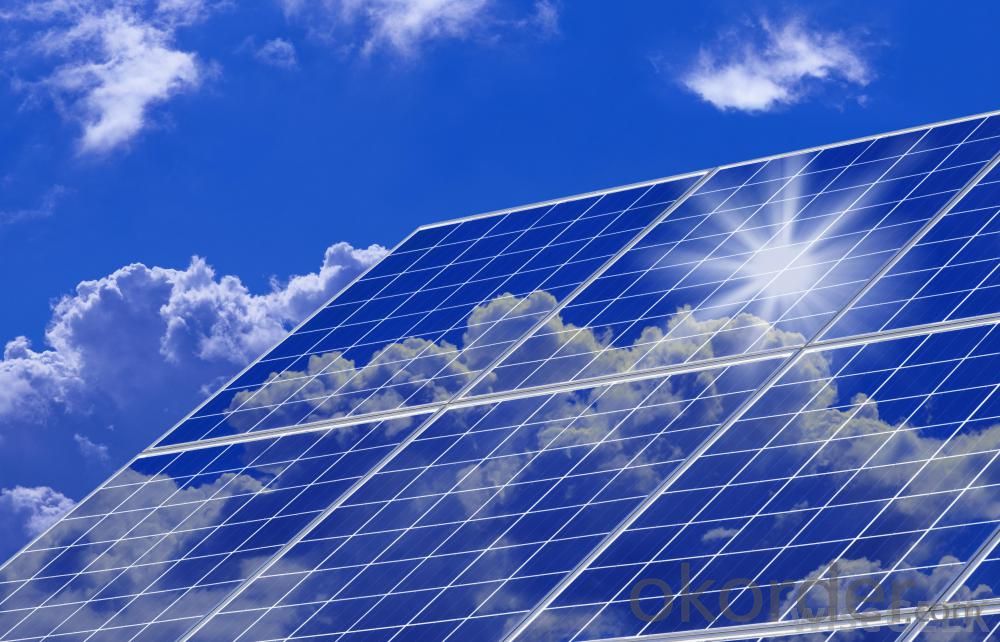
Shipping of Small Poly Solar Panel 35~85w
By Sea | Delivery from Shanghai or Ningbo seaport |
By Air | Departure from Shanghai Pudong Airport |
By Express | Post by DHL, EMS, UPS, TNT. |
Features of our products:
• High conversion efficiency mono/poly-crystalline amorphous silicon solar cells
• Modules incorporate high performance bypass diodes to minimize the power drop caused by shading
• High transmittance, low-iron tempered glass
• High performance EVA encapsulant to prevent destroying and water.
• AI frame: without screw, corner connection. 8 holes on the frame can be installed easily
• Good performance of preventing from atrocious weather such as wind and hails
• Certifications: CE IEC TUV VDE UL, Class I
• 10 years 90% power output warranty
As a professional Solar Panel manufacturer and Supplier in China, we have our customers come around the whole world and our specialization has got a worldwide recognition. Meanwhile, with our superior quality, competitive price, prompt and excellent service, As main role in trade section of CNBM Group, CNBM International Corporation supplies products including Monocrystalline Solar Panel, Polycrystalline Solar Panel ( multicrystalline silicon Solar Panel) have received and enjoyed famous reputation in many countries and regions in the world.
- Q: Is it possible to store excess electricity generated by a solar energy system?
- Yes, it is possible to store excess electricity generated by a solar energy system. One common method of storage is through the use of batteries. Solar energy systems can be equipped with battery banks that store the excess electricity generated during the day for use during the night or when there is low sunlight. These batteries can be charged and discharged as needed, providing a reliable and continuous power supply even when the sun is not shining. Another method of storing excess electricity is through grid-tied systems. In this setup, when the solar energy system generates more electricity than is being used, the excess power is fed back into the electrical grid. This excess power is credited to the homeowner's account, and they can use these credits to draw electricity from the grid during times when their solar panels are not producing enough power, such as at night or during cloudy days. Both battery storage systems and grid-tied systems provide a way to store and utilize excess electricity generated by a solar energy system, ensuring that no energy goes to waste and enabling homeowners to have a reliable and uninterrupted power supply.
- Q: Can solar energy systems store excess energy for later use?
- Yes, solar energy systems can store excess energy for later use. One of the main challenges with solar energy is that it is intermittent – it is only generated when the sun is shining. However, advancements in technology have made it possible to store the excess energy produced by solar panels during sunny periods for later use when there is no sunlight available. There are different types of energy storage systems that can be used in conjunction with solar energy systems. One common method is to use batteries to store the excess energy. These batteries can be charged during the day when the solar panels are producing more energy than is being consumed, and then the stored energy can be used during the night or on cloudy days when the panels are not generating enough electricity. Other methods of energy storage include using thermal storage systems, which store excess heat generated by solar thermal systems, or using pumped hydroelectric storage, which involves pumping water uphill during periods of excess energy production and then releasing it downhill to generate electricity when needed. By storing excess energy for later use, solar energy systems can provide a more consistent and reliable source of electricity. This is especially important in areas where there may be limited sunlight or where energy demand exceeds the amount of energy that can be generated during sunny periods. Additionally, storing excess energy can also help reduce reliance on the grid and provide backup power during power outages. Overall, the ability to store excess energy is a crucial feature of solar energy systems, allowing them to provide a more reliable and sustainable source of electricity.
- Q: Is it possible to store excess electricity generated by a solar energy system?
- Excess electricity generated by a solar energy system can indeed be stored. One way to do this is by using batteries, which are commonly employed for this purpose. Battery banks can be integrated into solar energy systems to store surplus electricity produced during the day, allowing it to be utilized at night or during periods of low sunlight. By charging and discharging as necessary, these batteries ensure a consistent and dependable power supply, even in the absence of sunlight. Another means of storing excess electricity is through grid-tied systems. In this configuration, any surplus power generated by the solar energy system is fed back into the electrical grid. The excess electricity is then credited to the homeowner's account, enabling them to draw power from the grid during times when their solar panels are unable to generate enough energy, such as at night or on cloudy days. Both battery storage systems and grid-tied systems offer effective solutions for storing and utilizing surplus electricity generated by solar energy systems. These methods ensure that no energy is wasted and enable homeowners to enjoy a reliable and uninterrupted power supply.
- Q: Are solar panels weather-resistant?
- Yes, solar panels are weather-resistant. They are designed to withstand various weather conditions, including rain, snow, hail, and high winds. The materials used in solar panels are durable and can withstand exposure to different climates and temperatures. However, extreme weather events like hurricanes and tornadoes can potentially damage solar panels, although this is relatively rare.
- Q: Can solar energy systems be used for heating and cooling purposes?
- Yes, solar energy systems can be used for heating and cooling purposes. Solar thermal systems can use the sun's energy to heat water or air, which can then be used for space heating or to supply hot water. Additionally, solar-powered air conditioning systems, such as solar cooling systems or absorption chillers, can use solar energy to cool buildings.
- Q: How do solar energy systems affect energy bills?
- Solar energy systems can have a significant impact on energy bills by reducing or even eliminating the need to purchase electricity from the grid. These systems generate electricity from sunlight, which can be used to power homes or businesses. When excess electricity is produced, it can be fed back into the grid, earning credits or reducing the overall bill. As a result, solar energy systems can greatly reduce energy bills over time, providing long-term cost savings and potentially even making households or businesses energy independent.
- Q: Are solar energy systems cost-effective?
- Yes, solar energy systems are cost-effective in the long run. Although the initial installation costs may be high, solar energy systems provide significant savings on electricity bills over time and can even generate excess power that can be sold back to the grid. Additionally, solar energy systems require minimal maintenance and have a long lifespan, making them a cost-effective and sustainable investment.
- Q: Can solar energy systems be used in areas with limited roof space due to chimneys or vents?
- Yes, solar energy systems can still be used in areas with limited roof space due to chimneys or vents. In such cases, alternative installation options like ground-mounted solar panels, solar canopies, or solar pergolas can be considered. These options allow for the utilization of unused land or outdoor spaces to generate solar energy, making it possible to harness solar power even in areas with limited roof space.
- Q: What is the impact of tree shading on solar energy system performance?
- The impact of tree shading on solar energy system performance is significant. Trees can block sunlight from reaching the solar panels, reducing their efficiency and overall energy production. Shading can cause uneven distribution of sunlight, leading to hotspots and potential damage to the panels. Additionally, tree debris such as leaves and branches can accumulate on the panels, further obstructing sunlight and requiring regular cleaning. Proper tree management and placement of solar panels are crucial to maximize the performance and output of solar energy systems.
- Q: Can a solar energy system be installed on a barn or agricultural building?
- Certainly, it is possible to install a solar energy system on a barn or agricultural building. In fact, an increasing number of farmers and agricultural businesses are embracing solar energy to fulfill their electricity requirements. There are numerous advantages to installing solar panels on barns or other agricultural structures. To begin with, barns and agricultural buildings often boast spacious rooftops or open areas, which provide ample room for the installation of solar panels. This enables efficient utilization of solar energy and can result in the generation of a substantial amount of electricity. Additionally, the installation of a solar energy system on a barn or agricultural building can assist in reducing or even eliminating electricity costs for the property. This is particularly advantageous for farmers, who typically have high energy consumption due to the operation of various equipment such as irrigation systems, lighting, ventilation, and machinery. Furthermore, solar energy systems are ecologically friendly and produce clean, renewable energy. By installing solar panels, farmers can significantly decrease their carbon footprint and contribute to a more environmentally sustainable future. Moreover, many governments and utility companies offer financial incentives, grants, or tax credits to encourage the adoption of solar energy systems. These incentives can help offset the initial installation costs and make investing in solar energy more affordable for farmers. Lastly, a solar energy system on a barn or agricultural building can serve as a backup power source during power outages, ensuring uninterrupted critical operations. In conclusion, installing a solar energy system on a barn or agricultural building is not only possible but also highly advantageous. It enables farmers to reduce energy costs, minimize their environmental impact, and potentially generate additional income through incentives or by selling excess electricity back to the grid.
Send your message to us
Maryland Solar Energy Systems 45w Small Solar Panels in Stock China Manufacturer
- Loading Port:
- China main port
- Payment Terms:
- TT OR LC
- Min Order Qty:
- 1 watt
- Supply Capability:
- 10000000 watt/month
OKorder Service Pledge
OKorder Financial Service
Similar products
Hot products
Hot Searches
Related keywords
